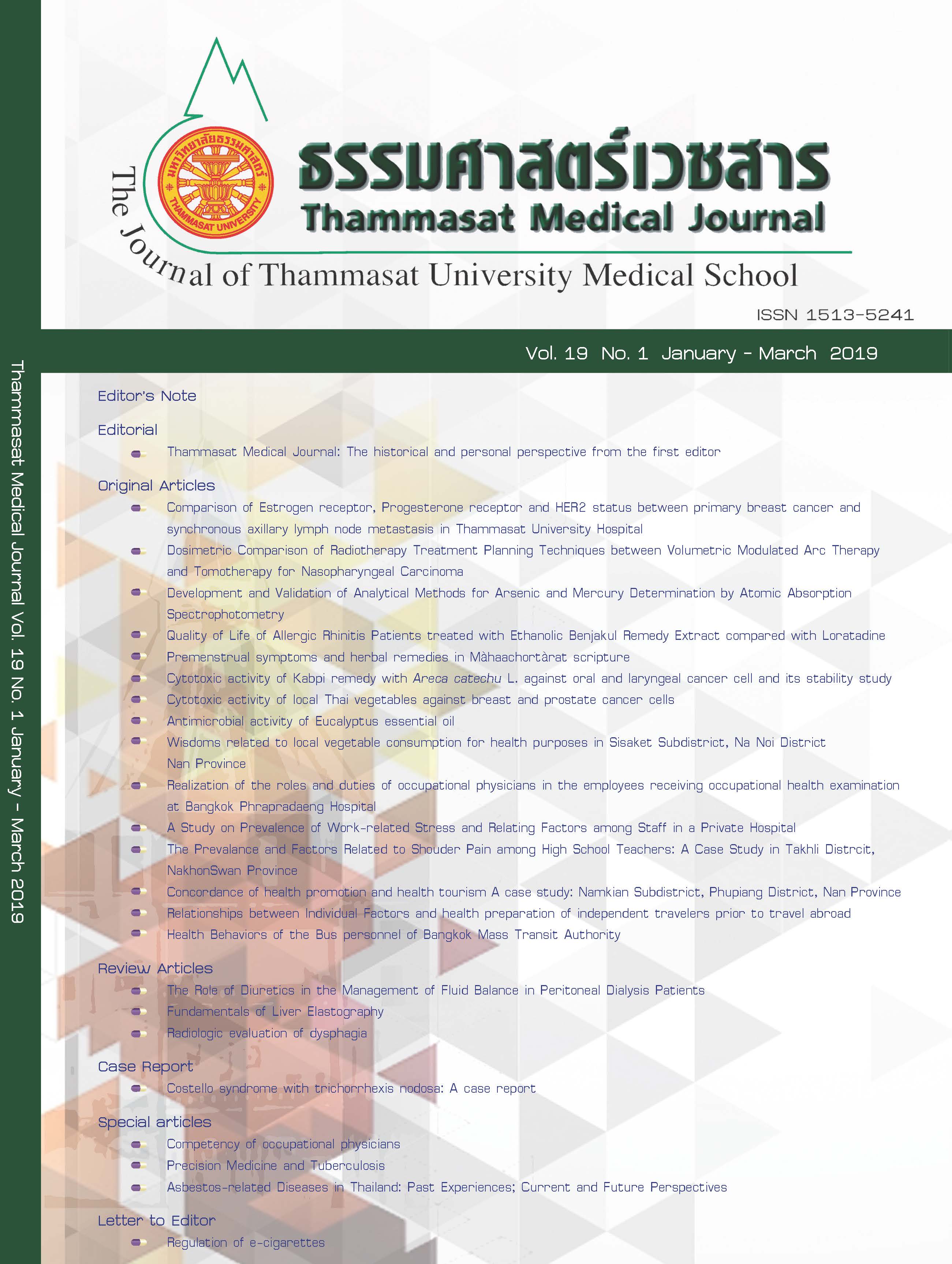Dosimetric Comparison of Radiotherapy Treatment Planning Techniques between Volumetric Modulated Arc Therapy and Tomotherapy for Nasopharyngeal Carcinoma
Keywords:
Nasopharyngeal Carcinoma, Volumetric Intensity Modulated Arc Therapy, Helical TomotherapyAbstract
Introduction: Nasopharyngeal Carcinoma (Nasopharyngeal cancer : NPC) was increase every year. A role of treatment were Volumetric Intensity Modulated Arc Therapy (Volumetric Modulated Radiation Therapy : VMAT) and Helical Tomotherapy (Helical Tomotherapy : HT).
Method: This study was a retrospective experimental study. A CT images data of 14 NPC patients with the target volumes and the organ at risks (Organs at risk : OARs) delineated by the Radiation Oncologists were used. The patients were already treated with HT. These images data were used to generate VMAT plans. Then the quality indexes (Conformity index : CI, Heterogeneity index : HI) and dosimetric parameters (D50, V95, V107) of the target volume and the organ at risks were compared between the results of VMAT and HT plans.
Results: The results showed that the target volume (Planning Target Volume : PTV70) and all the dosimetric parameters comparison between VMAT and HT plans were not statistically significant
difference. The mean D50 of the HT plan was closer to the prescribed dose than the VMAT plan and the mean V95, V107 of the HT plan was less than that of the VMAT plan. The mean CI and HI of the VMAT and HT plan were 0.53, 0.068 and 0.50, 0.066, respectively. Both indices did not statistically significant difference. For Dmean of the left and right salivary glands of the VMAT and HT plan were 32.25, 32.67 Gray and 33.55, 33.23 Gray respectively. There were no statistically significant difference in Dmean of the two salivary glands. The mean D2cc of the spinal cord received by the HT plan was less than that of the VMAT plan. The mean spinal cord Dmax received by the VMAT plan were lower than the HT plan. But the D2cc and DMAX in the spinal cord received from both treatment plans did not statistically significant difference.
Conclusion: The results of this study show that the dosimetric parameters of the target volume and the OARs of the VMAT and HT plans are not statistically significant difference. However, there is a tendency for the HT plan to provide better target volume dosimetric quality and the VMAT plan is likely to provide better dosimetric quality of OARs. Further research that has more sample
size should provide more clear dosimetric comparison.


